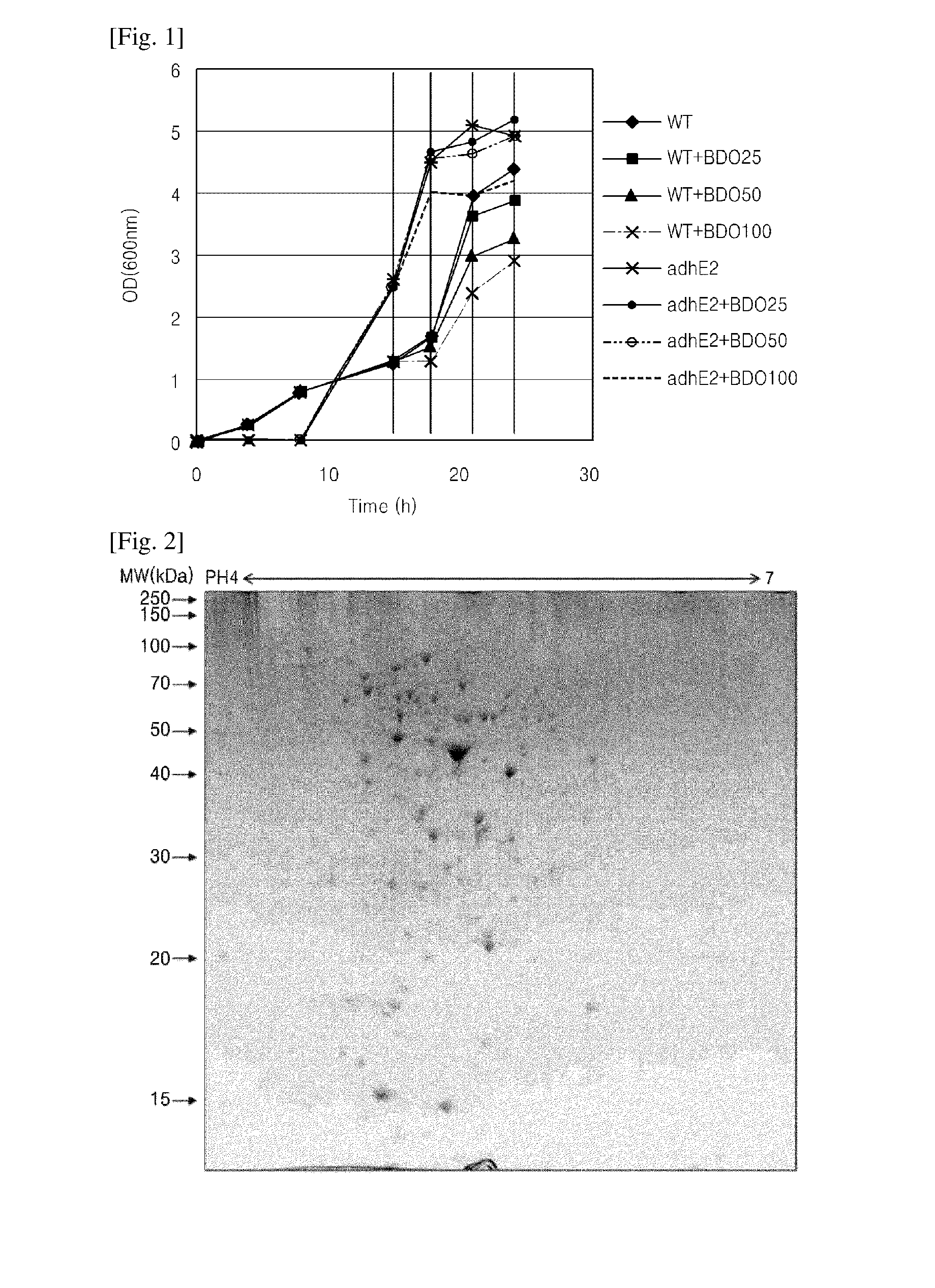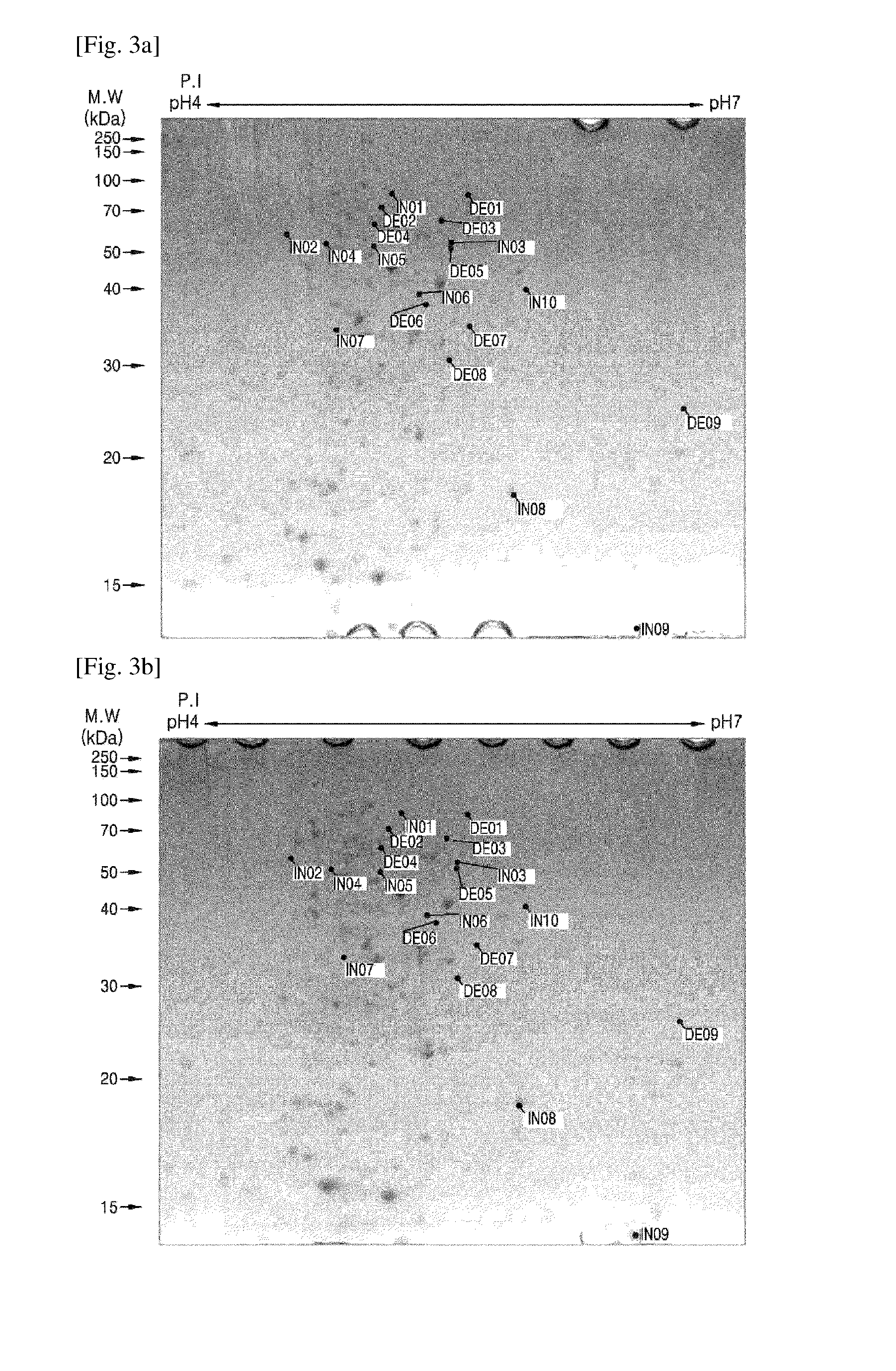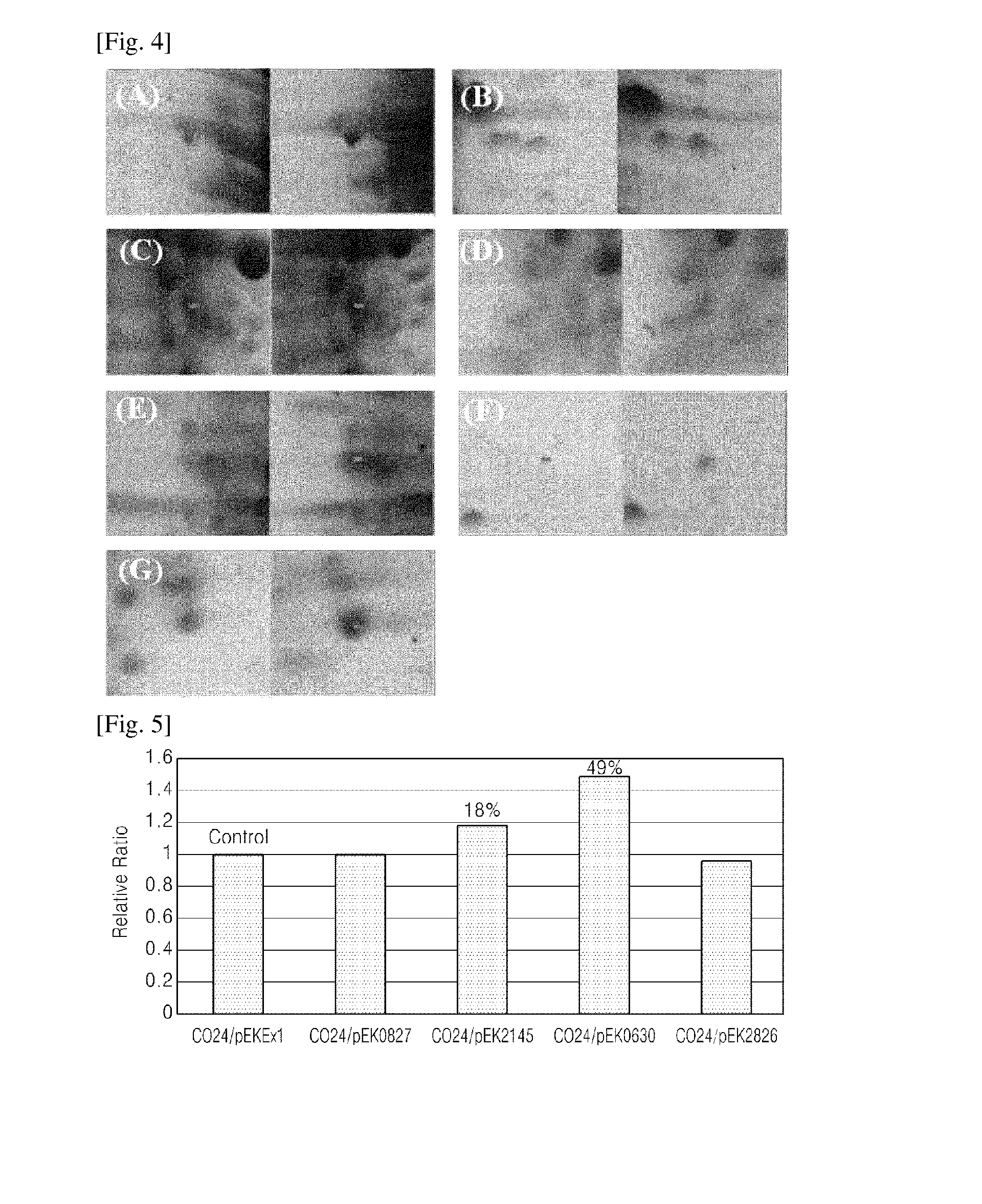Method of screening gene for 1,4-bdo production
a screening method and gene technology, applied in the direction of instruments, transferases, peptides, etc., can solve the problems of increasing production costs, affecting the efficiency of the screening process, and limiting the approach alone to effectively discovering a protein or a gene related to the 1,4-bdo production. achieve the effect of high efficiency
- Summary
- Abstract
- Description
- Claims
- Application Information
AI Technical Summary
Benefits of technology
Problems solved by technology
Method used
Image
Examples
example 1
Preparation of Corynebacterium Microorganism Wherein Endogenous Lactate Dehydrogenase Gene is Deleted
[0071]A decrease in intracellular acetyl-CoA concentration was found when culturing Corynebacterium glutamicum ATCC13032 under anaerobic conditions. Therefore, it was assumed that decrease in TCA cycle activity may be caused by the decrease in the acetyl-CoA concentration. In addition, an experiment was designed in search of a method to resolve the problem. For this, a Δldh Corynebacterium microorganism ATCC13032 wherein endogenous lactate dehydrogenase gene is deleted (“basic strain” hereinafter) was prepared by deleting the endogenous lactate dehydrogenase gene so that the Pdh enzyme activity might be conveniently measured in the natural Corynebacterium glutamicum.
1.1 Preparation of Replacement Vector
[0072]The L-lactate dehydrogenase gene of Corynebacterium glutamicum (CGL) ATCC13032 was inactivated by homologous recombination using a pK19 mobsacB (ATCC87098) vector. The two homol...
example 2
Introduction of Genes for 1,4-BDO Production
2.1 Preparation of pK19 gapA::4G Vector
[0074]A CGL strain capable of producing 1,4-BDO was prepared on the basis of the strain prepared above. To insert four genes of cat1, sucD, 4hbD, and cat2 into a chromosome of the strain, pK19 gapA::4G vector for the insertion of cat1, sucD 4hbD, and cat2 genes was prepared on the basis of pK19 mobsacB. The pK19 gapA::4G vector was prepared by synthesizing whole 4G gene having a nucleotide sequence of SEQ ID NO:23 and cloning the 4G gene into the NheI and XbaI restriction enzyme sites of the pK19 mobsacB vector.
2.2 Preparation of CGL (ΔldhA) Strain
[0075]The pK19 gapA::4G vector was introduced to CGL (Δldh) by electroporation. The strain wherein the pK19 gapA::4G vector was introduced was cultured at 30° C. by streaking the strain on LBHIS culture medium including kanamycin 25 μg / ml. The colony was streaked on LB-sucrose culture medium and cultured at 30° C. Then, only the colonies wherein double cross...
example 3
Preparation of Strain Wherein adhE2 is Introduced
3.1 Preparation of pK19 gapA::adhE2 Vector
[0076]To insert the adhE2 gene to the chromosome, the pK19 gapA::adhE2 vector for insertion of adhE2 gene was prepared on the basis of pK19 mobsacB. The pK19 gapA::adhE2 was prepared by synthesizing whole adhE2 gene having a nucleotide sequence of SEQ ID NO:26 and the cloning the adhE2 gene into the Smal restriction enzyme site of the pK19 mobsacB vector.
3.2 Preparation of CGL (ΔldhA 4G adhE2) Strain
[0077]The pK19 gapA::adhE2 vector was introduced to CGL (Δldh 4G) by electroporation. The strain wherein the pK19 gapA::adhE2 vector was introduced was cultured at 30° C. by streaking the strain on LBHIS culture medium including kanamycin 25 μg / ml. The colony was streaked on LB-sucrose culture medium and cultured at 30° C. Then, only the colonies wherein double crossing over occurred were selected. The genome DNA was separated from the selected colonies, and introduction of the adhE2 gene was verif...
PUM
| Property | Measurement | Unit |
|---|---|---|
| concentrations | aaaaa | aaaaa |
| concentrations | aaaaa | aaaaa |
| concentrations | aaaaa | aaaaa |
Abstract
Description
Claims
Application Information
 Login to View More
Login to View More - R&D
- Intellectual Property
- Life Sciences
- Materials
- Tech Scout
- Unparalleled Data Quality
- Higher Quality Content
- 60% Fewer Hallucinations
Browse by: Latest US Patents, China's latest patents, Technical Efficacy Thesaurus, Application Domain, Technology Topic, Popular Technical Reports.
© 2025 PatSnap. All rights reserved.Legal|Privacy policy|Modern Slavery Act Transparency Statement|Sitemap|About US| Contact US: help@patsnap.com



